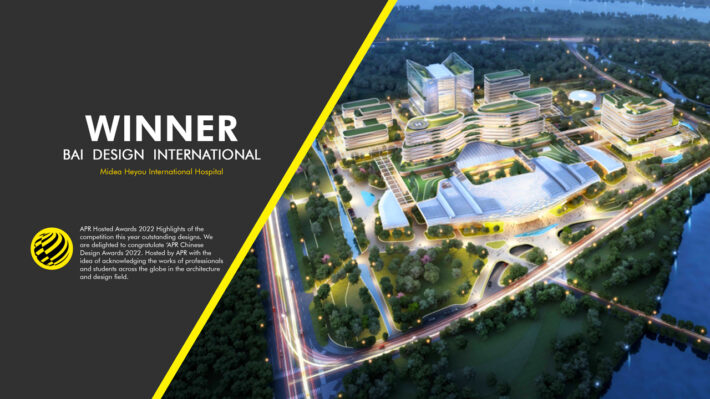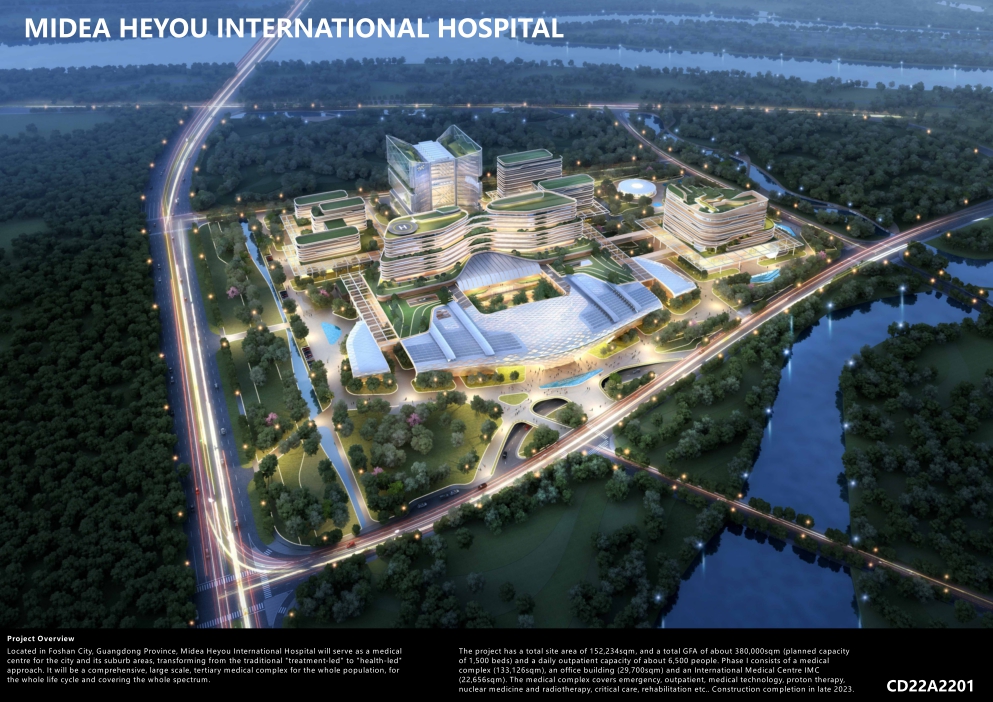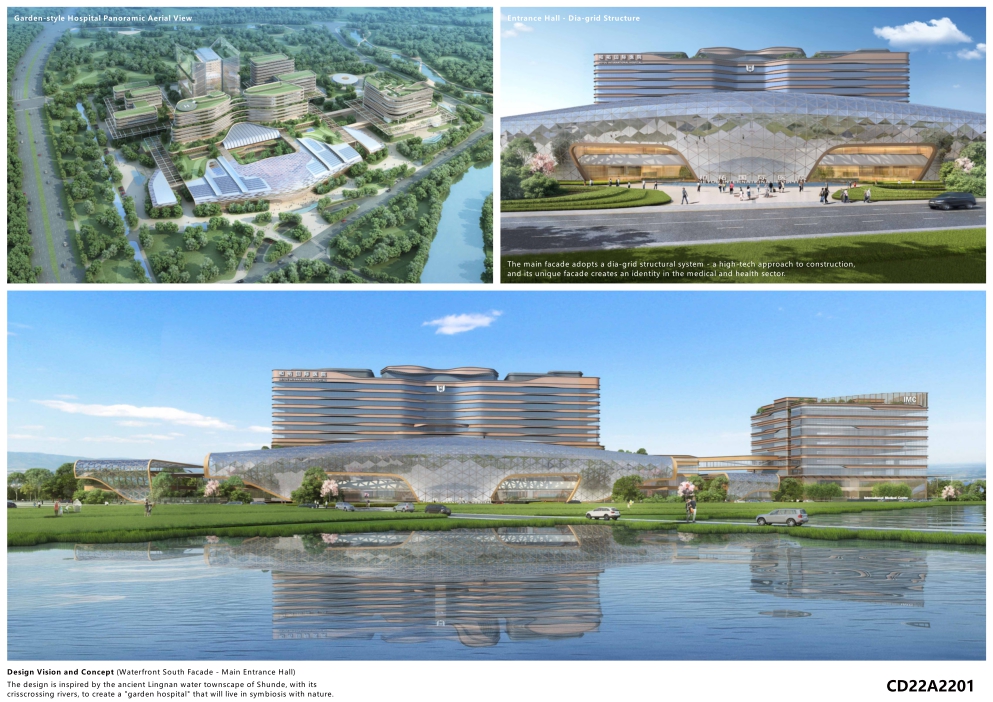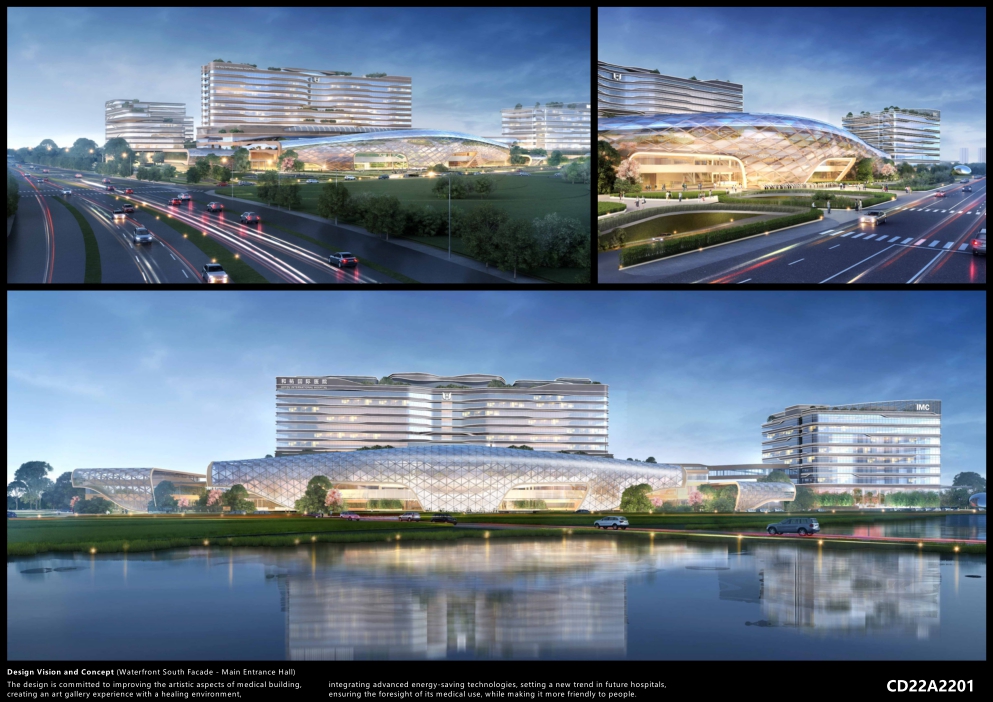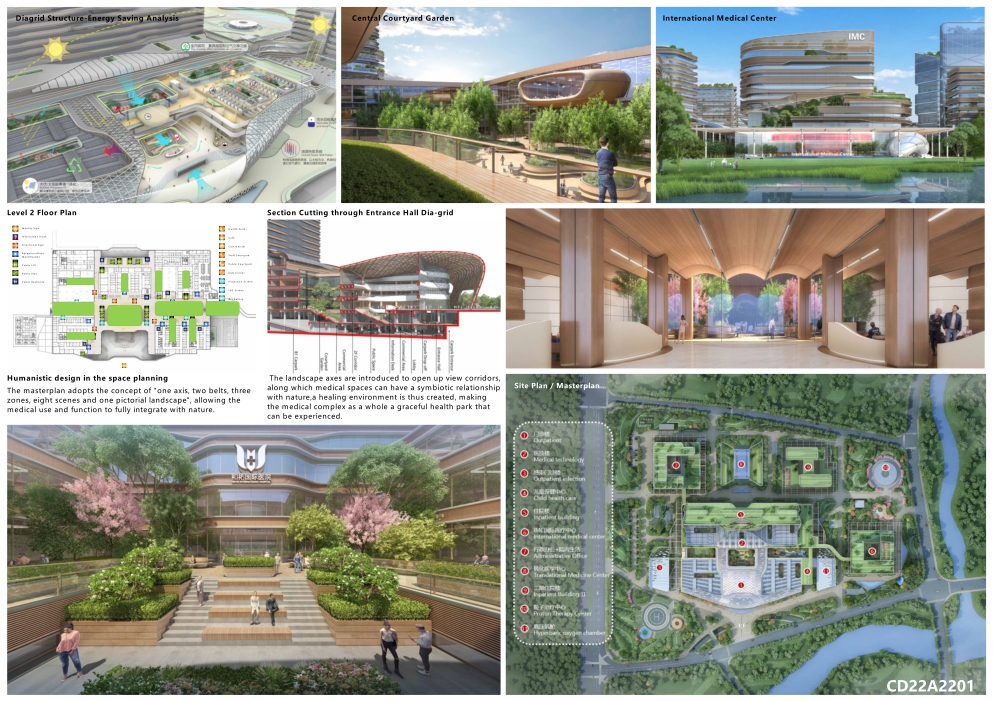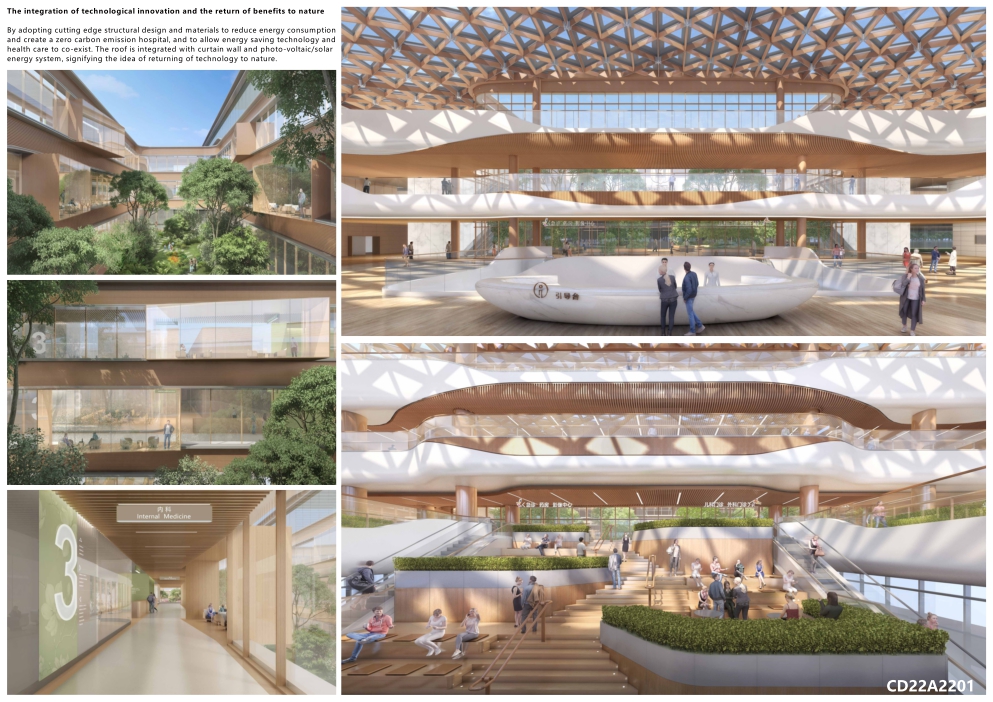Located in Foshan City, Guangdong Province, Midea Heyou International Hospital will serve as a medical centre for the city and its suburb areas, transforming from the traditional “treatment-led” to “health-led” approach. It will be a comprehensive, large scale, tertiary medical complex for the whole population, for the whole life cycle and covering the whole spectrum.
Urban Design & Architecture Design Awards 2023: Entries Open!
Gold 🏆 Winner
Chinese Design Awards 2022
Midea Heyou International Hospital
Architecture Design Under Construction
Firm
BAI Design International
Architect/Designer
Yu Bai
Design Team
Na Feng, Laura Zurbano Amo, Fabio Canni, Fei Meng, Weina Wang, Xipeng Zhao, Lili Lian, Cheng Li, Haimo Shi, Ying Liang, Jieyu Zhu, Xianglin Piao, Jing Zhao, Hao Lv, Kang Deng, Deming Zhuang, Jingxian Pan, Xuemin Dong, Ziwei Li, Rong Hu
Location
Foshan
Country
China
Photographer/Copyright
©BAI Design International
The project has a total site area of 152,234sqm, and a total GFA of about 380,000sqm (planned capacity of 1,500 beds) and a daily outpatient capacity of about 6,500 people. Phase I consists of a medical complex (133,126sqm), an office building (29,700sqm) and an International Medical Centre IMC (22,656sqm). The medical complex covers emergency, outpatient, medical technology, proton therapy, nuclear medicine and radiotherapy, critical care, rehabilitation etc.. Construction completion in late 2023.
Design Vision and Concept
The design is inspired by the ancient Lingnan water townscape of Shunde, with its crisscrossing rivers, to create a “garden hospital” that will live in symbiosis with nature. The design is committed to improving the artistic aspects of medical building, creating an art gallery experience with a healing environment, integrating advanced energy-saving technologies, setting a new trend in future hospitals, ensuring the foresight of its medical use, while making it more friendly to people.
Humanistic design
The masterplan adopts the concept of “one axis, two belts, three zones, eight scenes and one pictorial landscape”, allowing the medical use and function to fully integrate with nature. The landscape axes are introduced to open up view corridors, along which medical spaces can have a symbiotic relationship with nature, a healing environment is thus created, making the medical complex as a whole a graceful health park that can be experienced. The design reflects the ‘whole life cycle’ concept, with a planned ‘plug-in’ modular layout of medical units that can grow with future needs.
The integration of technological innovation and the return of benefits to nature
By adopting cutting edge structural design and materials to reduce energy consumption and create a zero carbon emission hospital, and to allow energy saving technology and health care to co-exist. The roof is integrated with curtain wall and photo-voltaic/solar energy system, signifying the idea of returning of technology to nature. The main facade adopts a dia-grid structural system – a high-tech approach to construction, and its unique facade creates an identity in the medical and health sector.


